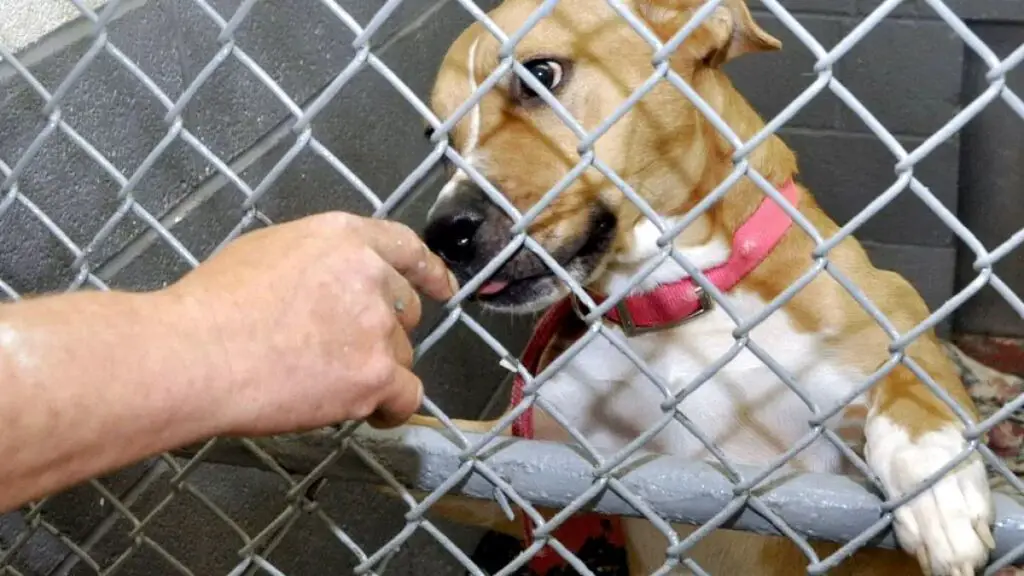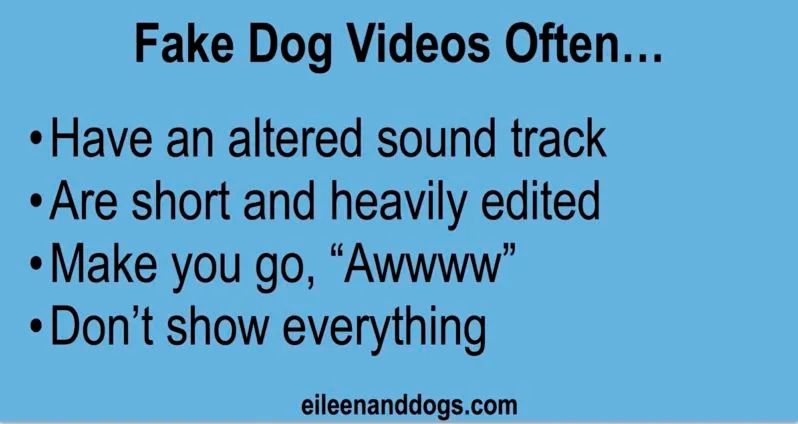Introduction
In recent years, social media has been flooded with dramatic videos depicting animal rescues, often involving dogs. While many of these videos do show real rescues, a disturbing number have turned out to be staged or manipulated in order to maximize engagement and shares. Though concrete statistics are hard to pin down, experts estimate a significant portion of highly viral animal rescue content contains some element of fakery. This trend raises serious ethical concerns and negatively impacts animals and legitimate rescue organizations.
These misleading videos exploit compassion for animals to generate clicks and follows. By analyzing common tactics and raising awareness, we can push back against this unethical practice and advocate for transparency and integrity in animal rescue content.
Motivations
One of the main motivations behind fake dog rescue videos is the desire for likes, shares, and new followers on social media platforms. In the age of viral videos and influencer culture, many content creators and accounts are constantly striving to produce the next attention-grabbing post. A dramatic “rescue” video that appears to show a person saving an animal from danger or distress can quickly grab viewers’ emotions and promote rapid sharing across various sites and apps.

The algorithmic nature of platforms like Facebook, YouTube, and TikTok rewards engagement through likes, comments, and shares. A viral video can mean a surge in followers and views for an account. Even if some viewers eventually realize the video was staged, the creator has already benefitted from the initial social media growth and visibility. For accounts focused on monetization through influencer marketing and sponsorships, the most important metric is often raw follower/subscriber numbers rather than authenticity or trust.
While the motivations are often more about vanity metrics over genuine altruism, the spread of fake or exaggerated rescue videos still taps into people’s goodwill and desire to see animals helped. But legitimate animal rescue and welfare organizations have raised concerns about these disingenuous videos distorting public perceptions and potentially contributing to real harm.
Common Tactics
A common tactic used in fake dog rescue videos is putting dogs in dangerous situations in order to film a dramatic “rescue.” For example, some creators have been caught tossing dogs into raging rivers or leaving them stranded on debris in fast-moving water. They then jump in, sometimes while filming, to dramatically save the dog. In reality, they put the dog in danger in the first place.
Other fake rescues involve tying dogs up or trapping them somewhere, like in a hole, dumpster, sewer or abandoned building. The person then comes along, finds the animal in distress and rescues them on camera. However, it’s later revealed they staged the entire situation themselves in order to depict themselves as a hero.
Essentially, the dogs are being abused or put in harm’s way in order to get content. While the videos often show the dog being “saved,” the animal is subjected to real fear and distress in the process, all for the sake of going viral online.
Harm to Animals
Many fake dog rescue videos involve deliberately putting dogs in harmful situations purely to film the “rescue.” This can cause serious psychological and physical distress to the animals involved.
The fear and stress caused by being abandoned, trapped, or placed in dangerous circumstances can negatively impact a dog’s mental health and behavior. Even if a dog is “rescued” shortly after, the experience may still traumatize them and lead to ongoing anxiety, fear, or aggression issues.

In addition to psychological harm, fake rescues sometimes physically endanger dogs. Dogs have been injured or killed from dangerous stunts, being left in hot vehicles, or exposed to other life-threatening situations. While their suffering is used to manipulate emotions, the dog’s well-being is ignored.
Using live animals as props and putting them through distress for the sole purpose of creating content is unethical. Their health and safety should be the top priority, not virality.
Legal and Ethical Issues
The viral videos of fake animal rescues raise serious legal and ethical concerns. At the core is the issue of animal cruelty and exploitation. When animals are deliberately put in harm’s way or distressed purely for the purpose of filming a staged rescue, it likely violates animal protection laws that prohibit cruelty and neglect. Though it may not cause lasting physical harm, the intentional infliction of fear, anxiety, discomfort or pain solely for a video clearly raises ethical issues and, in many cases, violates animal welfare laws.
Beyond the often unethical treatment of animals, creating and sharing fake rescue videos can also be seen as a willful deception of viewers. When videos are manipulated to make situations appear dangerous, or even harm animals, solely to generate more views, likes and shares, the creators are misleading the public. Viewers believe they are witnessing a legitimate rescue, not staged animal abuse. This duping of sympathic animal lovers for clicks and viral attention presents an ethical concern. Though not illegal, it does violate the trust and goodwill of the massive online community dedicated to animal welfare.
Impact on Legititimate Rescues
The prevalence of staged dog rescue videos has far-reaching consequences for animal welfare organizations doing authentic rescue work. When viewers cannot discern real rescues from fakes, it erodes public trust in all rescue groups. People become skeptical of viral videos asking for donations or adoptions. This loss of trust is a huge blow for underfunded groups relying on community goodwill.

Worse still, the hype around dramatic fake rescues draws attention and resources away from legitimate efforts. Fake videos are created solely to drive social media engagement, not help animals. But they soak up donations and volunteers that could go to real rescues saving lives. For organizations working earnestly for animal welfare, staged videos are not just dishonest, they actively sabotage important rescue work andlimit happy endings for more animals in need.
Social Media Response
Social media platforms have taken some steps to combat fake animal rescue videos, but more work is still needed. Many platforms now have policies prohibiting harmful pranks and misinformation, which should cover staged animal rescues. However, enforcement of these policies has been inconsistent.
When fake rescue videos are identified, they are often flagged by animal welfare organizations or vigilant viewers. But platforms don’t always respond by taking down the content. Videos will sometimes remain up and continue earning money for the creators.
Part of the challenge is the massive amount of content being uploaded constantly. Reviewing every video for authenticity is impractical. While algorithms can help detect re-uploads and duplicative content, identifying fake videos that are unique requires human eyes.
Advocacy groups have called on platforms to be more proactive in taking down fake animal rescue footage and banning repeat offenders. However, identifying violators can be complicated by users changing accounts or tweaking video tactics to avoid detection.
Increased user literacy is an important part of combating misinformation. Teaching viewers to spot signs of staged videos and report suspicious content can help platforms respond more quickly. Fact-checking and debunking viral fake animal rescues also helps limit their spread and impact.
While social platforms have more work to do, public pressure and media exposure of fake animal rescue channels has led to some progress in taking down egregious offenders. Still, the financial incentives mean new channels continue popping up using different tactics. Ongoing vigilance by both platforms and users is required to address this issue effectively.
Raising Awareness
As more fake dog rescue videos proliferate on social media, it’s important to educate viewers on how to recognize staged animal rescues. Many fake videos use common tropes like an animal in visible distress, a surprise rescue, and a heartwarming recovery. However, legitimate rescues rarely unfold this dramatically. Educating the public on typical rescue protocols and warning signs of fakes is crucial.
In addition to general education, directly calling out fake videos when they appear can be impactful. Social media users concerned about fake dog rescues can help stem their spread by commenting on suspected fake videos to alert others. Polite but direct comments explaining warning signs about why the video seems staged can discourage views and shares. With more pushback, creators of disingenuous animal rescue content may eventually cease due to reduced popularity.
What Viewers Can Do
There are a few things that viewers can do when coming across rescue videos that seem suspicious or outright fake:

Report Them: If you believe a video portrays animal cruelty or abuse, report it to the platform it is hosted on. Social media platforms like Facebook, YouTube, and TikTok all have mechanisms to flag suspicious content. You can also report egregious cases to animal welfare organizations or local law enforcement.
Donate Wisely: If you feel compelled to donate after watching one of these videos, make sure to do your research first. Look into the individual or organization asking for donations before contributing money. Legitimate animal rescues will provide documentation on how they use funds. Be wary of crowdfunding campaigns with little transparency or accountability.
Be Skeptical: Approach rescue videos with healthy skepticism instead of blindly accepting them as reality. Look for signs like convenient camera angles, captions exaggerating the animal’s condition, or unlikely circumstances surrounding the “rescue”. Let reason override emotions when deciding if a video is authentic. If it seems staged, it very well may be.
The Future
Many wonder if the fake dog rescue trend will continue to grow or if it will start to decline. There are good arguments on both sides.
On one hand, as these videos continue to spread across social media and garner millions of views, more people will be incentivized to stage their own fake rescues in hopes of going viral. The ability to potentially earn advertising revenue from YouTube and other platforms provides additional motivation. With the bar set so low for what gains widespread views, creators will likely continue pushing the boundaries with more outrageous and elaborate fake scenarios.
However, there is hope the trend may decline as viewers become more skeptical and platforms crack down. Some fed up viewers have started calling out fakes in the comments. Major social networks like Facebook and TikTok have banned certain accounts known for fake animal rescues. If public opinion sours on these deceitful videos, creators may look to other viral content formats. More vigilance and enforcement from the platforms could curb the incentives over time.
Ultimately, the future likely holds a bit of both. While the fakes may slow down in growth, the trend has already reached massive scale and is deeply ingrained in social media culture. For now it seems unrealistic that fake dog rescues will completely fade away. More probably, viewers will become savvier at detecting which videos are likely staged, and creators will have to work harder to fool their audiences.